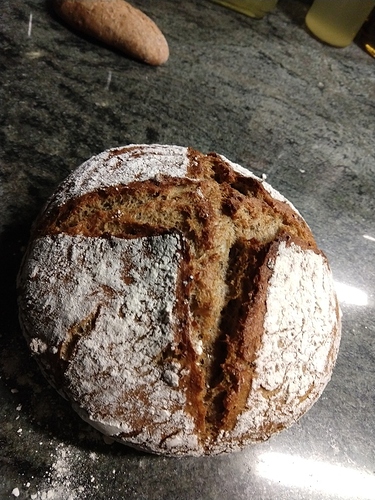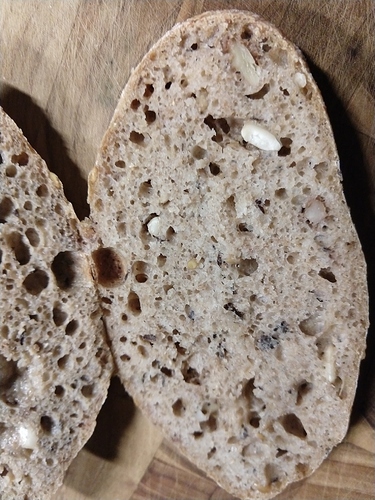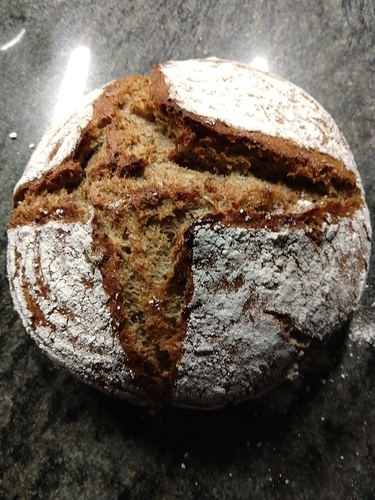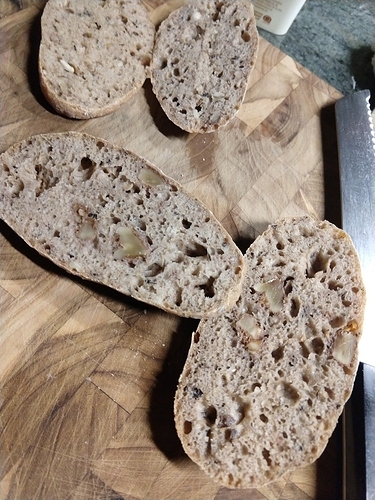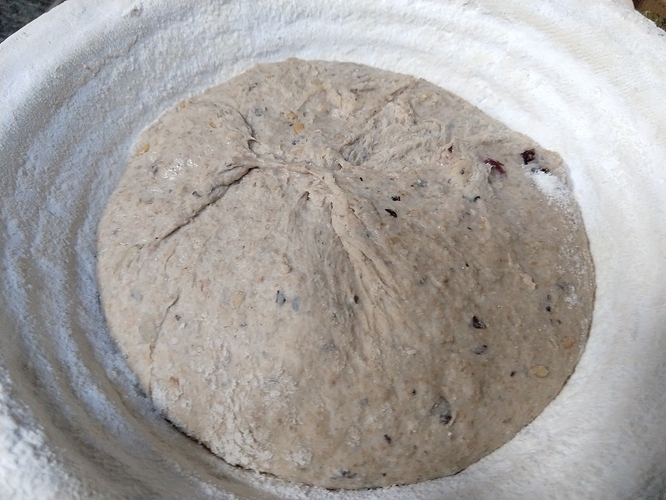First of all, I want to emphasize that my process works for me and I am 100% in favor of anyone doing whatever process works for them. So if what I wrote came across in any way as a criticism or a put-down or anything like that, I did not mean it that way at all.
Second, alls I’m sayin’ is after having done some baking for a while and coming to a certain basic understanding of the sourdough fermentation lifecycle, I can bake pretty decent bread pretty much every time, but I really don’t know (happily) a lot of the stuff that you wrote about up there. I have heard of falling numbers and ash content and other grain stats like that, but I have no idea what those things actually mean in practice or how they may affect a given grain’s performance.
From experience, I do know that einkorn, even though it has “numbers” that say it is “high in protein,” has almost no workable gluten at all so, all by itself, it barely rises because there is no elasticity so no tension to hold in the bubbles that the sourdough beasties are kindly blowing in their process of consuming sugars from the flour. I learned this from baking a couple loaves of einkorn bread. So now if I want to bake a loaf of einkorn bread, I don’t expect it to rise a lot. And in fact, if I wanted to make an einkorn loaf, I’d make it in a bread pan rather than trying to do a freeform, artisan style loaf.
I also know from experience that grain changes, sometimes quite a lot, from one batch to another. So when I buy “Red Fife” (which I usually like baking with) from Breadtopia over and over again over the years, I don’t expect it to be the same grain every time. It varies from year to year, season to season; I assume also from farmer to farmer. It tends to have a certain character that I like, but it varies a lot within a range.
Those variations don’t throw me off because when I look at, smell, and feel the dough as it is bulk fermenting, I’m doing it without any hard and fast expectations. On Thursday evening I almost always mix up a bowl of dough for something like the country loaf that you mentioned, and leave it to bulk proof overnight. When I wake up on Friday morning, I take a look, take a sniff, do a couple stretch and folds. Sometimes the dough looks exactly like it did when I left it on the counter the evening before - like nothing at all is happening. Sometimes it’s already poofy and 1.5x expanded with a slight sour smell. Sometimes the bulk proof is “done” by 9am, sometimes not till 3pm. Either way is fine by me because I’m just gonna shape it, put it into a proofing basket, and then pop it in the fridge until early Saturday morning when I’ll bake it.
I think that the only thing I really have to get “right” is ending the bulk proof after the dough has expanded enough (1.5x? 2x?, maybe 2.5x?), but well before it hits its peak and starts contracting. How do I know how much is “enough”? That’s where the experience comes in and I don’t know how to communicate it other than to say, with grains like the ones I am talking about that have gluten content and performance in the range of a hard red wheat, an expansion of somewhere between 1.5X to 2.5X is probably in the ballpark (though I’ve also had success with bulk proofing up to 3x). And for beginners I’d say that as long as the dough has become poofy / aerated, then it’s probably better to err on the side of stopping the bulk proof too early than too late. If you stop it early and leave a lot of food in the dough, then oven spring is going to give you a nice loaf even if the crumb doesn’t end up being as open as it might be if you nail the timing better.
Then over time, that nailing the timing better, is the art part. You get to know how temperature and hydration and starter activity level and different grain performance all interact with each other so you can get a sense of what to expect timing-wise and make adjustments. And by the way, for me, all those variables are qualitative and not quantitative. When I say grain performance I’m totally not talking about falling numbers. When I say hydration, I mostly don’t really know what the actual % is - I’m just talking about how wet the dough SEEMS. I’m probably gauging the temperature by whether I am wearing a hoodie or a t-shirt.
I can tell you that when I was starting out I over-complicated things a lot. Baking bread has become a more enjoyable craft as I have let it become simpler. And my bread has gotten better, too.
 ) but from memory I only bulk proofed for 3 hours and final proofed an hour as it had risen but according to my testing this fell short of the total 7 hours needed, so I believe this was the issue.
) but from memory I only bulk proofed for 3 hours and final proofed an hour as it had risen but according to my testing this fell short of the total 7 hours needed, so I believe this was the issue.
